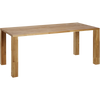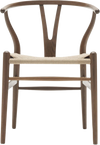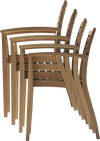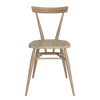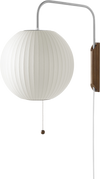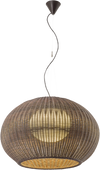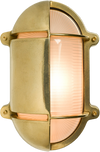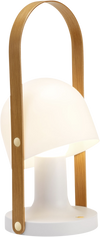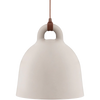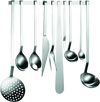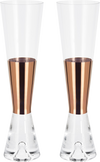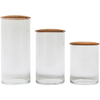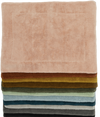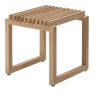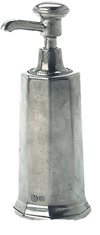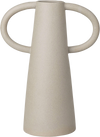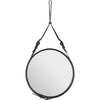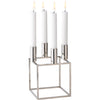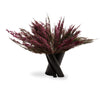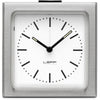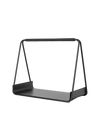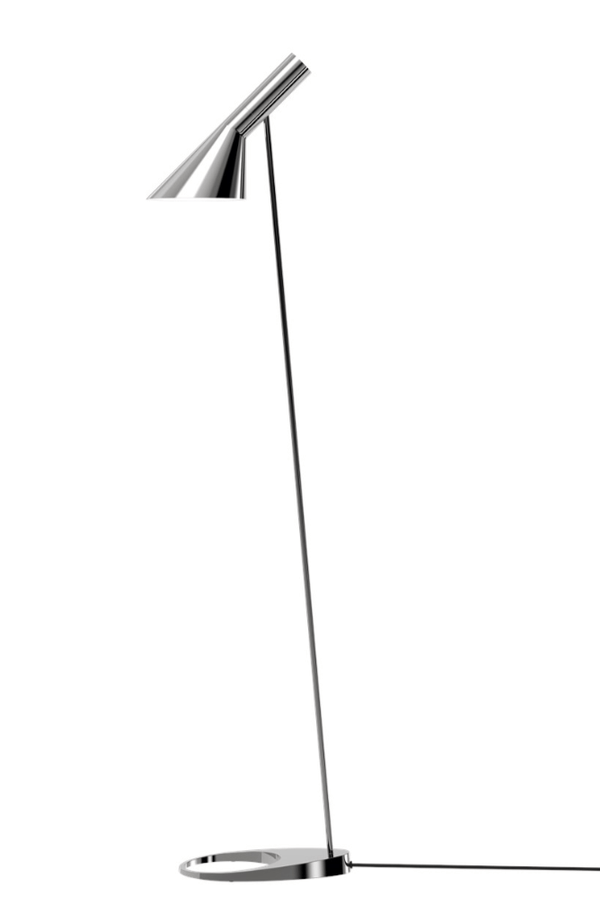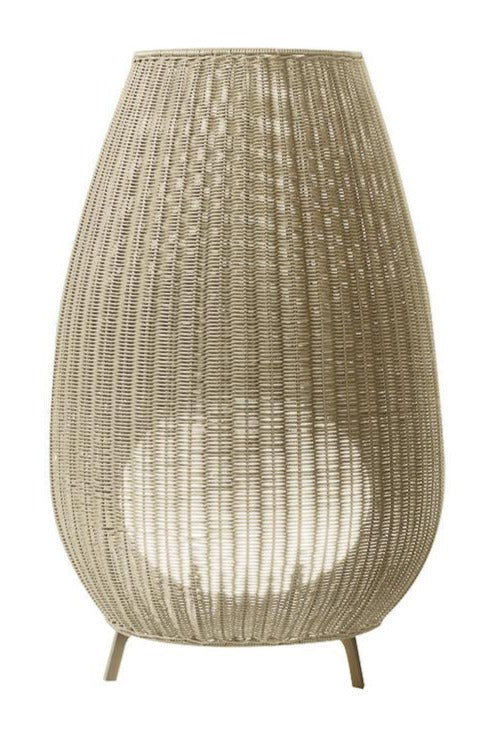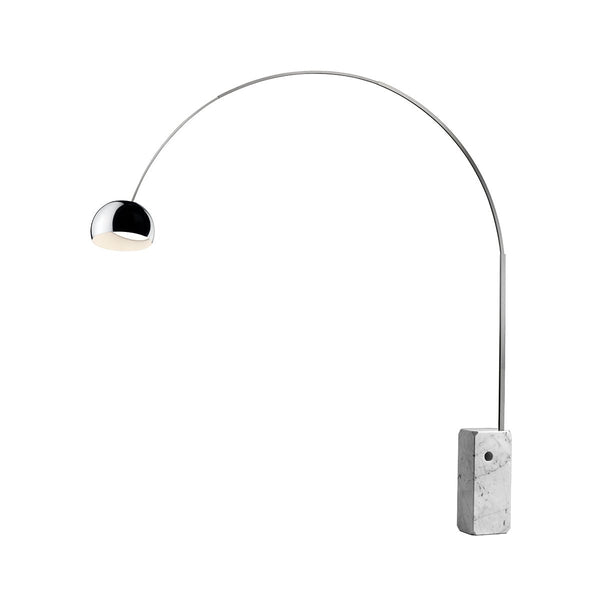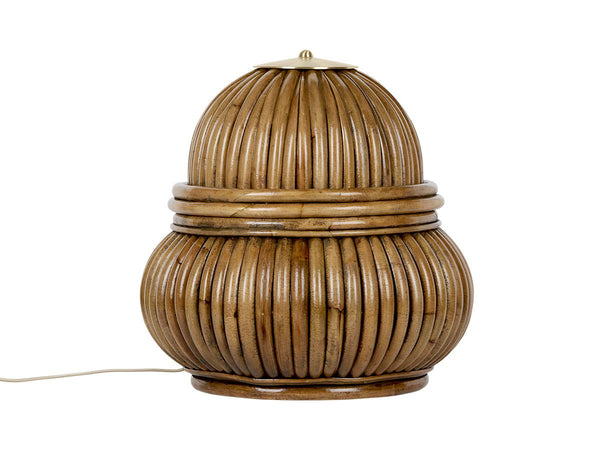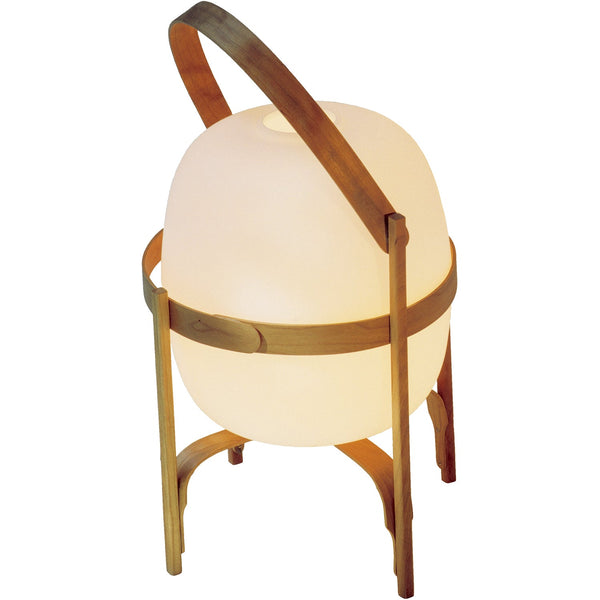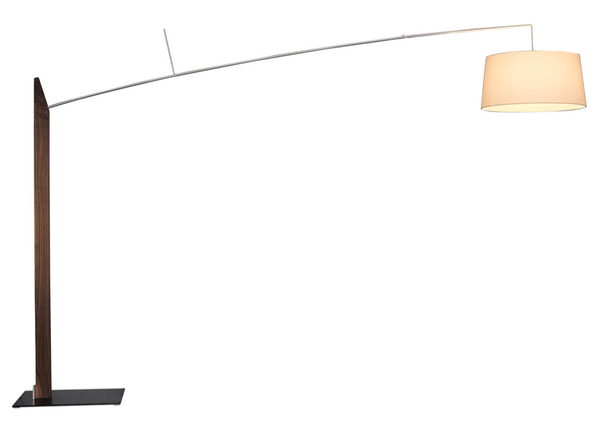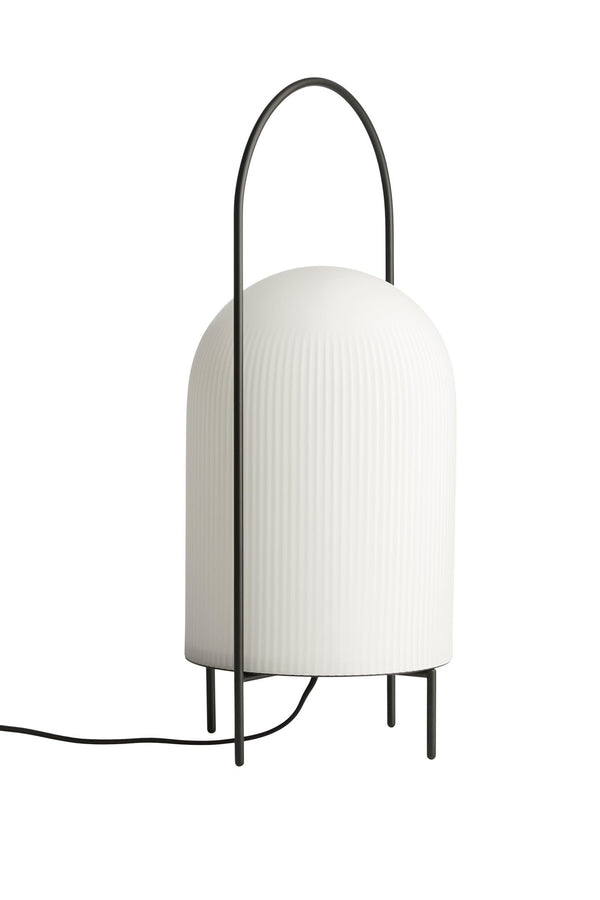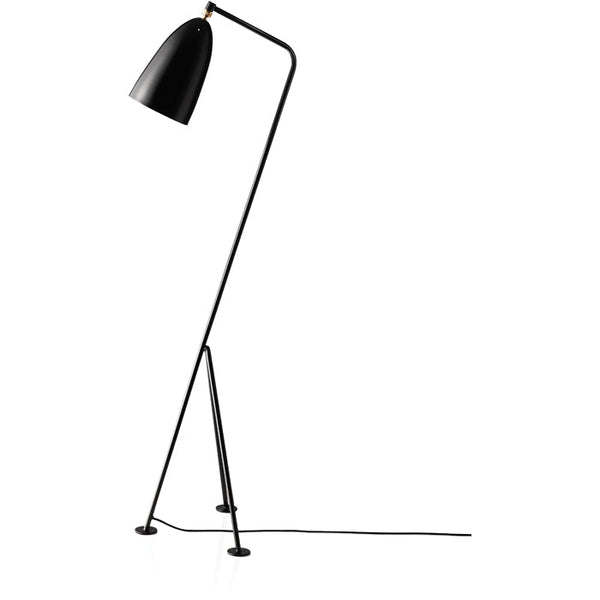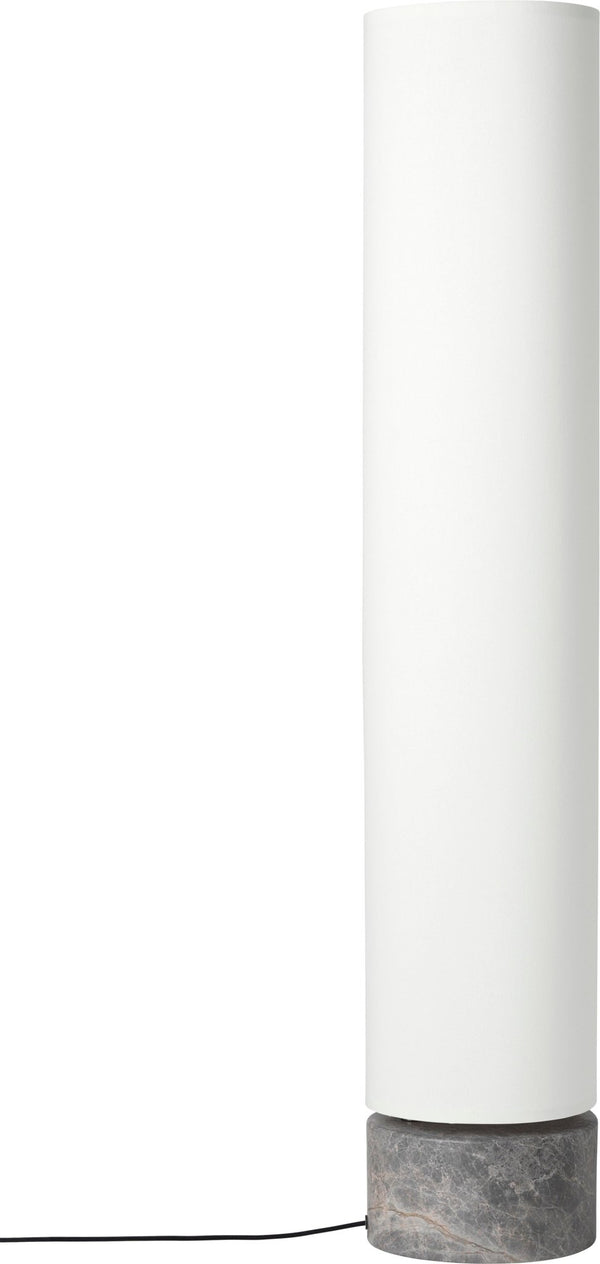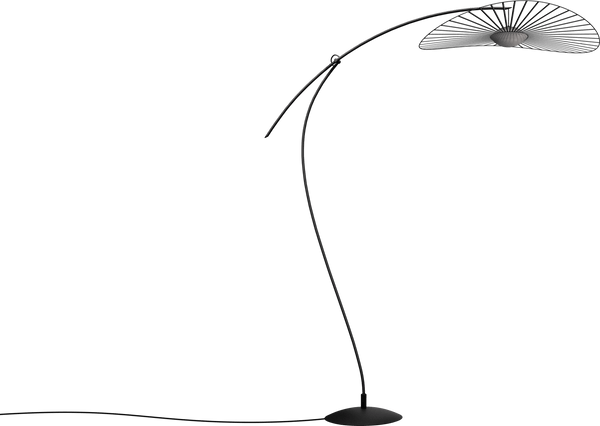Bauhaus to Contemporary: Floor Lamp Trends
With a robust history of designs that span the spectrum of architectural trends and art movements, the standing lamp takes on a rich evolution that continues to develop and expand.

Some of the most influential floor lamp designs came from Nordic countries like Denmark and Finland who produced iconic creations like the original Mid-Century arc lamp from Flos known as the Arco Floor Lamp. However, worldwide, wherever the artistic winds blew – from Bauhaus to minimalist and beyond - the floor lamp followed, taking on some of the most distinctive and innovative designs of each era.
Bauhaus Lamps
The Bauhaus Movement in art and architecture blossomed from the The Staatliches Bauhaus, an art school in Germany which operated from 1919 to 1933. The distinctive style has an avant-garde industrial aesthetic that prefers sharp lines, geometric shapes, and mixed media. Pieces in this style highly functional, if not somewhat abstract. Bauhaus lamps feature highly minimalistic silhouettes, following the Bauhaus blueprint of reducing furniture down to its fundamental elements. This floor lamp trend dominated the years in which the Bauhaus school operated, primarily influencing Germany but later inspiring future generations of designers to create pieces like the Richardt Chair from Frama. This back-to-basics approach can still be clearly seen in today’s reiterations of Bauhaus, specifically in the AJ Floor Lamp from Louis Poulsen or Pablo Designs’ Lim Floor Lamp. This just-the-essentials approach defines the Bauhaus style and guarantees a timeless look that still reads as effortlessly sophisticated in its design.
Art Deco Lamps
Beginning at the turn of the century and extending into World War II, the Art Deco period of design permeated every area of art and culture – from vehicles to buildings to household appliances, and, of course, furniture. Originating in France where art expositions were in vogue, Art Deco pulls inspiration from Cubism, Futurism, and De Stijl, distilling their basic elements down into a whole new style of design with its own distinctive earmarks.
Art Deco is highly decorative, as the name suggests, and the near-perfect antithesis to avant-garde, relying on symmetry, geometric cohesion, repeated patterns, bright, bold colors, and careful lines.
Infused with a sense of whimsy that is checked by a refined expression, Art Deco often inspires a sense of nostalgia – even for those not alive during the height of Art Deco mania.
One of the most popular examples of Art Deco can be found in the Chrysler Building in New York City. If you'd like to bring that refined, visual harmony home, the PH 3.5-2.5 Floor Light from Louis Poulsen is a great place to start, as well as the Wormhole 3-Arm Floor Lamp from Brass Brothers.

Bohemian Lamps
Bohemian style has the fantastic advantage of being a convergence of varying cultures and ideals. Originating in Paris, the Bohemian style took after its creators – the original Bohemians, a.k.a. artists, writers, and performers – evolving as they did. Their creativity was king and their style of living tended to embrace unorthodox standards and rules. All of this resulted in a more eclectic expression with little structure, more layers, blended textures, and a penchant for mixing and matching colors, mediums, and patterns. This carefree approach, fondly referred to as Boho, is centered in semi-abstract curated collections of items which evoke a sense of tranquility and functionality. Pieces are often humbly crafted. As a result, Bohemian floor lamps tend to follow a tract of simplicity – using what’s at hand – which allows for bursts of artistic detail that create an organic aesthetic.

Some clear earmarks of the Bohemian lamp are the materials. Often using rattan, metallic finishes, and natural wood, Bohemian lamps like the Cesta Lamp from Santa & Cole and the Amphora 01 Outdoor Lamp from Bover adopt unique shapes and an unusual interpretation of the floor lamp concept to create a contemporary, engaging and atmospheric light.
Mid-Century Modern Lamps
After WWII, at the mid-century mark of the 1900s, furniture began to take on the style later coined Mid-Century Modern by Cara Greenberg in her book, Midcentury Modern: Furniture of the 1950s. The Mid-Century trend moved away from function for the sake of decorative elements, artistic expression, and the mere beauty of objects. While not completely abandoning the practicality of everyday items, Mid-Century design often has an exuberant expression achieved through clean and simple designs that emphasize geometric shapes and unique angles.
One of the most well-known Mid-Century furniture icons is the Eames® Lounge Chair by Herman Miller®. In terms of contemporary floor lamps, the modern forms and materials of the Mid-Century style can be seen in Kalmar’s Dornstab Floor Lamp, the Fons Floor Lamp from Cerno, and Gubi’s Gräshoppa Floor Lamp.
Minimalist Lamps
Taking certain cues from Mid-Century Modern styling, the 1960s Minimalism era favored clean and uncomplicated expression, condensing designs into just the function of the object. This return to basics is still incredibly popular today, keeping pieces like the Tripod Floor Lamp HM8 from &Tradition in the limelight.
The primary principle of minimalism is “less is more”, meaning that every minimalist chair, table, and lamp is stripped of the superfluous and distilled to the basic and necessary components. There is nothing “extra” in minimalism. Yet it still brings dynamic character as can be seen in Woud’s Ghost Floor Lamp. This era also saw the first inklings of conservation and ecological efforts, which have flourished into industry-wide moves to incorporate eco-friendly manufacturing and material sourcing practices, making sustainability a pillar of their business model.

Contemporary Lamps
Contemporary designs deliberately use texture to build on the subtle sophistication made popular by minimalism. “Contemporary” means “of the moment”, so what is in style or in fashion in that particular year is most sought after – and it often takes on the characteristics of other design eras. Contemporary design blends elements from Art Deco, Mid-Century, Futurism, Minimalist, and other trends. Its pieces can commingle with minimalist furniture and abstract art, creating a flow unknown to other stylistic ages.
The Contemporary style utilizes shapes, clean lines, unusual silhouettes, and artistic innovations to create playful and expressive spaces with futuristic aesthetics. Contemporary floor lamps stretch across the spectrum of design from the Vertigo Nova Floor Lamp from Petite Friture to Gubi’s Unbound Floor Lamp.
The absolute and unending versatility of the standing lamp and its ability to follow trends has made it one of the most timeless pieces of furniture to enter any home. No matter the style, the standing floor lamp can transform a lighting composition and infuse a unique touch of style. Enjoy browsing HORNE’s collection of the best and most unique standing lamps – Our team is happy to answer any questions
























